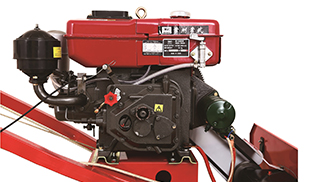авг . 13, 2024 19:41 Back to list
Understanding the Temperature Range of Brake Drums During Heavy Use and Performance Applications
How Hot Do Brake Drums Get?
When it comes to the safety and performance of your vehicle, understanding the heat generated by brake components is crucial. Brake drums, commonly found in older cars and some commercial vehicles, play a vital role in the braking system by converting kinetic energy into thermal energy. But how hot do these brake drums actually get during operation?
The Basics of Brake Drums
Brake drums are cylindrical components that work in conjunction with brake shoes to slow down or stop a vehicle. When the brake pedal is pressed, hydraulic pressure forces the brake shoes against the inner surface of the drum, creating friction. This friction generates heat as the moving vehicle's kinetic energy is dissipated.
Temperature Range of Brake Drums
Brake drums can reach remarkably high temperatures during normal operation. Under typical driving conditions, it is not uncommon for brake drums to reach temperatures between 300°F and 600°F (150°C to 315°C). However, in high-performance or heavily loaded situations—such as when going downhill, during aggressive braking, or in stop-and-go traffic—temperatures can soar even higher, sometimes exceeding 800°F (427°C).
Factors Affecting Brake Drum Temperature
Several factors contribute to how hot brake drums get
how hot do brake drums get

1. Driving Conditions As previously mentioned, frequent stopping, heavy loads, and downhill driving can significantly increase drum temperatures. Urban environments, where stoplights and traffic are common, tend to exacerbate this issue. 2. Brake Material The type of brake pads and shoes used also affects temperature. Some materials can withstand higher temperatures and dissipate heat more effectively than others.
3. Brake Maintenance Worn brake components, such as improperly adjusted shoes or damaged drums, can lead to increased friction and heat buildup. Regular maintenance helps ensure that braking systems function efficiently and coolly.
4. Vehicle Weight Heavier vehicles require more stopping power, which translates to increased heat generation in the brakes during operation.
Consequences of Overheated Brake Drums
When brake drums reach excessive temperatures, several issues can arise. One common problem is brake fade, which occurs when the brake components become too hot, leading to a reduction in friction efficiency. This can result in longer stopping distances and diminished vehicle control.
Severe overheating can also lead to physical damage such as warping or cracking of the drum, necessitating costly repairs or replacements. Overheated brake components can even ignite surrounding materials in extreme cases, posing a significant hazard.
Conclusion
Understanding the temperature range and the factors that influence brake drum heat is essential for vehicle safety and performance. While modern braking systems have advanced with the introduction of disc brakes, many older vehicles still rely on drum brakes, making it critical for drivers and vehicle owners to monitor their condition. Regular maintenance and being mindful of driving habits can help manage brake temperatures and enhance the overall safety of the vehicle. If you notice any signs of brake issues, such as squeaking, grinding, or a burning smell, it's important to have your braking system inspected promptly to avoid dangerous situations on the road.
-
Brake Drum Man - High-Quality Drum Brake Drums & Brake Shoes for Reliable Performance
NewsJun.24,2025
-
High-Quality Brake Drum Kamaz – Durable Drum Brake Drum & Brake Shoe Replacement
NewsJun.10,2025
-
High-Quality Brake Drum Liza for Drum Brake Systems - Superior Durability and Performance
NewsJun.10,2025
-
High-Quality Brake Drum Kamaz – Durable Drum Brake Drum & Brake Shoe Solutions
NewsJun.10,2025
-
Durable Kamaz Brake Drums High-Performance Truck Parts
NewsJun.09,2025
-
Premium Brake Drum Maz Kit with Shoes Enhanced Braking
NewsJun.09,2025
